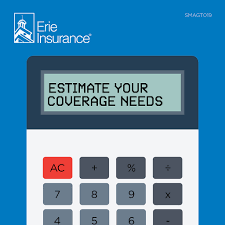Calculating insurance coverage for a new business is a crucial step in safeguarding assets, employees, and operations from unanticipated risks. The right coverage depends on factors such as industry type, business size, location, and potential liabilities.
The first step is to determine the essential insurance policies needed. Property insurance safeguards physical assets like buildings, equipment, and inventory, while general liability insurance covers legal fees and damages resulting from third-party claims. In most states, businesses with employees are required to carry workers’ compensation insurance, which is necessary for service-based businesses to cover negligence claims.

Revenue, number of employees, and business operations all affect the cost of insurance. High-risk industries like construction and transportation may. To calculate expenses accurately, businesses should obtain quotes from multiple insurers, compare policy options, and evaluate deductible levels.
Understanding the Types of Insurance Your Business Needs
Before calculating the insurance coverage for your new business, you need to understand the different types of insurance that may be required. Your specific needs will depend on your industry, location, and size.
- General Liability Insurance: Protects your business from claims related to bodily injury, property damage, or advertising injury.
- Property Insurance: Covers damage to your business property, including buildings, equipment, and inventory.
- Workers’ Compensation Insurance: Covers medical costs and lost wages for employees injured on the job.
- Professional Liability Insurance: Protects against claims of negligence, mistakes, or failure to perform professional duties.
- Business Interruption Insurance: Helps replace lost income due to events that disrupt your business operations, such as natural disasters or accidents.
- Commercial Auto Insurance: Covers vehicles owned or used by your business, such as delivery vans or trucks.
- Cyber Liability Insurance: Protects against data breaches and other cyber-related risks if your business handles sensitive customer information.
Evaluate Your Business Risks
The next step in calculating your insurance coverage is to evaluate the risks your business faces. The level of coverage you need will depend on the type of business you operate, the industry, and the geographical location. Here are some questions to help you assess your risks:
- What is the nature of your business?: A retail store will have different risks compared to a consulting firm. For example, a retail store may need more property insurance, while a consulting business may require professional liability insurance.
- Do you have employees?: If you employ others, workers’ compensation insurance is mandatory in most states.
- What is the value of your assets?: Consider the value of your equipment, inventory, and property to determine the level of property insurance you need.
- Do you interact with customers?: Businesses that provide services or products to the public may need general liability insurance to protect against lawsuits or claims.
- Do you store sensitive information?: If your business handles customer data, you may need cyber liability insurance to cover potential data breaches.
- Are you operating in a high-risk industry?: Certain industries, such as construction or healthcare, may face more liability claims and, therefore, require higher insurance coverage.
Determine the Minimum Insurance Requirements
In many cases, your business may be legally covered by general liability insurance, which may be necessary if you’re operating in a public space or serving clients. Make sure to check local and state regulations to understand the minimum insurance coverage you are required to have.

Here are some standard insurance requirements for businesses:
- Workers’ Compensation: Required for businesses with employees, depending on the state.
- General Liability: Required for many companies, particularly those with physical locations.
- Commercial Auto Insurance: Required for businesses that own or operate vehicles.
- Professional Liability: Required for specific industries like healthcare, law, or consulting.
Assess the Value of Your Business Assets
One of the most crucial steps in calculating insurance coverage is determining the value of your business assets.
- Tangible Assets: This includes physical property, such as buildings, inventory, office equipment, machinery, and vehicles.
- Intangible Assets: These might consist of.
Estimate the Costs of Potential Liabilities
Liabilities are one of the most significant risks for businesses, and determining the amount of coverage required will depend on the likelihood of facing legal claims or damages. Here’s how to estimate the potential costs of liabilities:
- General Liability: Evaluate the cost of potential accidents or injuries that could occur at your business. For example, if you run a restaurant, you may need coverage for slips, trips, and falls.
- Professional Liability: If you provide professional services, such as consulting, you’ll want to estimate the potential costs of a lawsuit related to errors or omissions in your services.
- Product Liability: If your business manufactures or sells products, consider the cost of damages resulting from faulty products.
Choose Your Coverage Limits
Once you’ve evaluated the value of your assets and potential liabilities, the next step is to choose your coverage limits, which are the maximum amount.
- Property Insurance Limits: For property insurance, you’ll need to calculate the replacement cost of your business assets. Be sure to include both the physical building and equipment, as well as inventory.
- Liability Insurance Limits: When determining the coverage limits for liability insurance, you should consider the potential severity of claims. For example, a small business might opt for a $1 million general liability policy, while larger companies may need more extensive coverage.
- Workers’ Compensation Limits: Workers’ compensation coverage is usually calculated based on the number of employees and the risk level of your industry. You may need additional coverage if your business operates in a hazardous field like construction.
- Umbrella Policies: In some cases, you may want coverage beyond your primary insurance limits. This can be useful for businesses that face high liability risks.
Get Insurance Quotes and Compare Policies

Once you understand the types and limits of coverage you need, the next step is to obtain quotes from different insurance providers. Insurance companies use other factors to calculate premiums, so it’s essential to compare.
When obtaining quotes, make sure to:
- Provide accurate information about your business operations, assets, and risks.
- Consider working with an insurance broker to help you navigate through the various options available.
- Evaluate the reputation and customer service of each insurance company.
Review and Adjust Your Coverage as Needed
It’s important to review your coverage regularly to ensure it’s still adequate. Some reasons to adjust your coverage might include:
- Expansion: If you acquire new assets or hire additional employees, you may need to increase your coverage.
- Business Changes: If you change the scope of your operations or move to a different location, your insurance needs may change.
- New Risks: As your business faces new risks, such as a new product line or new services, you might need to adjust your coverage accordingly.
Work with an Insurance Agent or Broker
Calculating insurance coverage for your new business can be complex, especially when you’re trying to balance cost with the protection your business needs. Navigate the process and find the best coverage options. Insurance professionals can help you:
- Assess your risks accurately.
- Guide you through policy options and exclusions.
- Ensure compliance with local laws and regulations.
- Offer insights into the types of coverage you might not have considered.
Frequently Asked Questions
What types of insurance does a new business need?
Most businesses need general liability, property insurance, and workers’ compensation. Additional policies depend on the industry.
How do I determine the amount of coverage needed?
Conduct a risk assessment, evaluate assets, and consider potential liabilities to decide on coverage limits.
What factors affect insurance costs?
Business size, industry risk, location, revenue, and number of employees influence premiums.
Is business insurance legally required?
Certain types, like workers’ compensation and commercial auto insurance, are mandatory in most states.
How do I calculate my premium?
Insurers assess business risk, claims history, and policy limits to determine premium costs.
Can I bundle multiple insurance policies?
Yes, business owners can bundle policies into a Business Owner’s Policy (BOP) to save on costs.
Does business insurance cover natural disasters?
Standard policies may not cover floods or earthquakes so that additional coverage might be needed.
How often should I review my insurance coverage?
At least annually or whenever there are significant business changes.
Can I adjust coverage as my business grows?
Yes, policies can be modified to match evolving business needs.
Where can I get business insurance quotes?
Business owners can compare quotes online, consult brokers, or contact insurers directly.
Conclusion
Calculating insurance coverage for a new business requires careful planning and risk assessment. Choosing the right policies ensures financial protection and legal compliance, reducing potential liabilities. Business owners should evaluate their operations. As the business grows, reviewing and updating policies is essential to maintaining adequate protection. By proactively managing insurance needs, new companies can operate with confidence and be secure in the knowledge that they are safeguarded against unexpected challenges.




